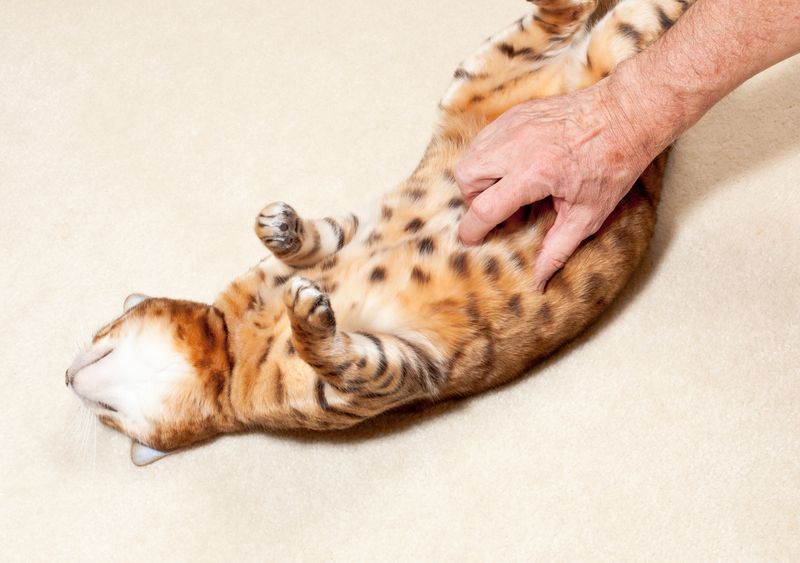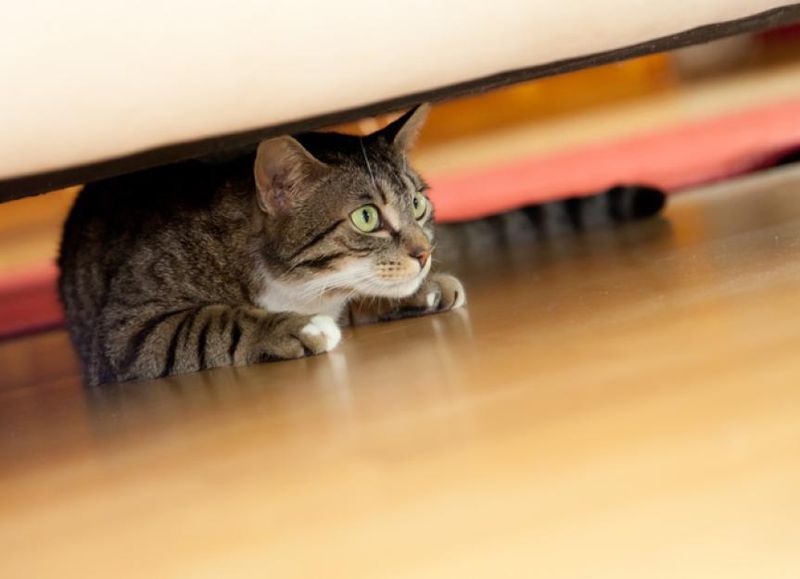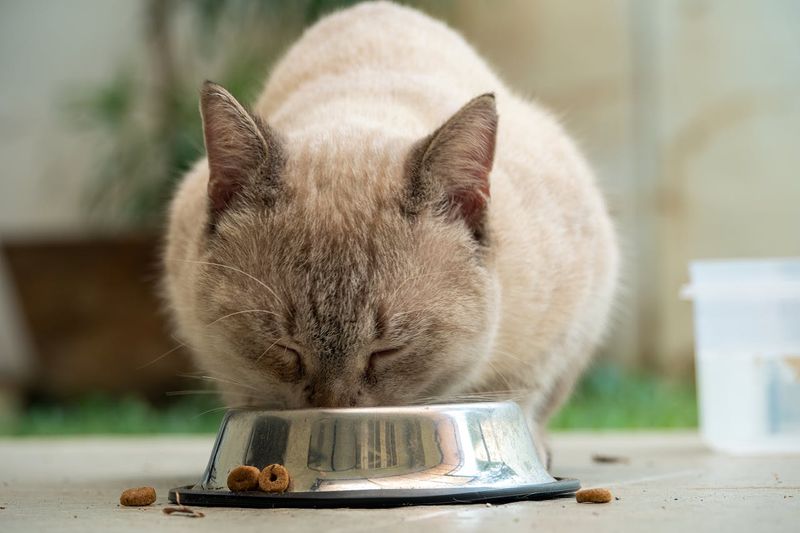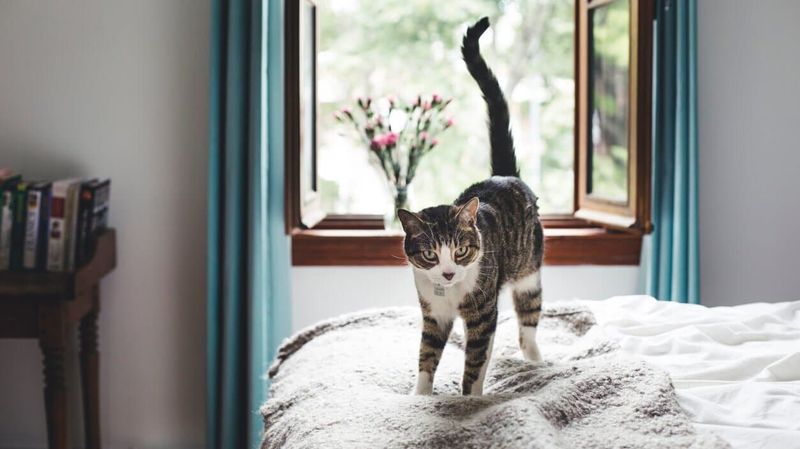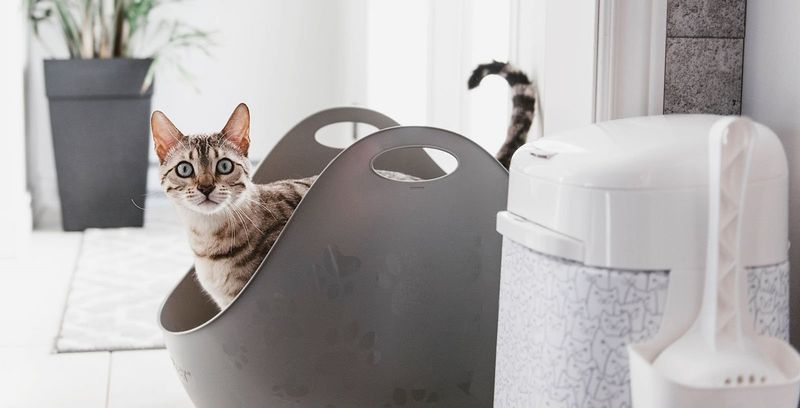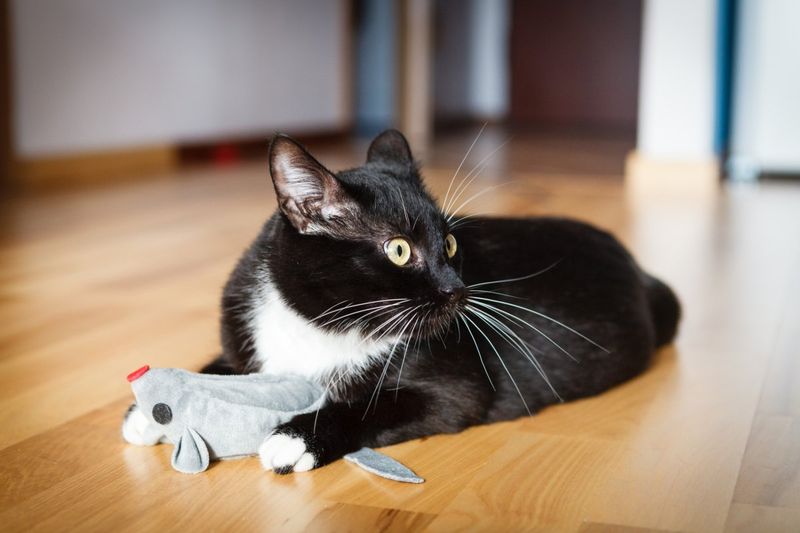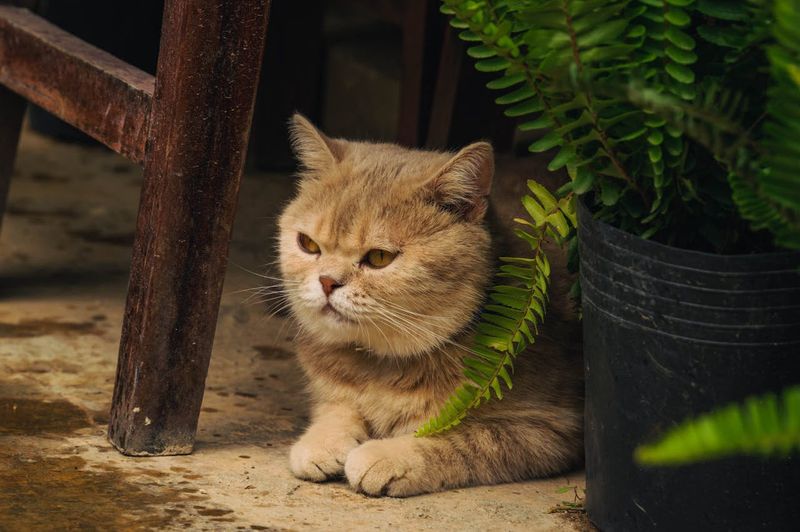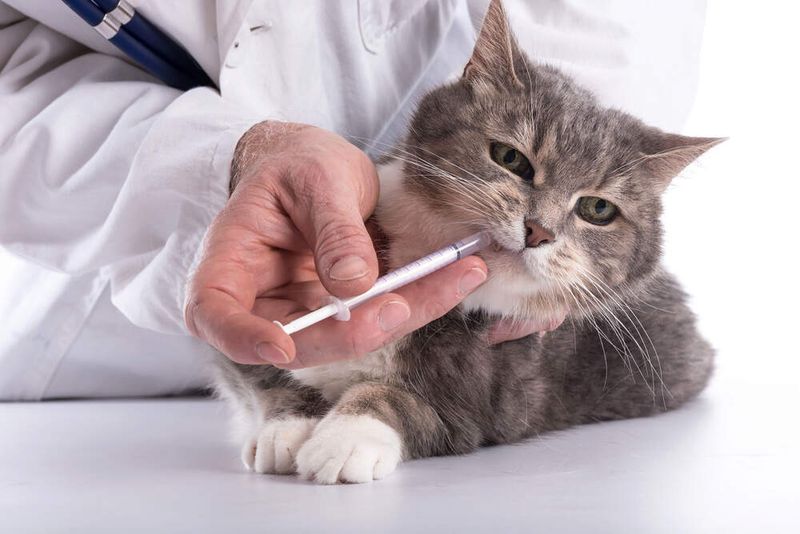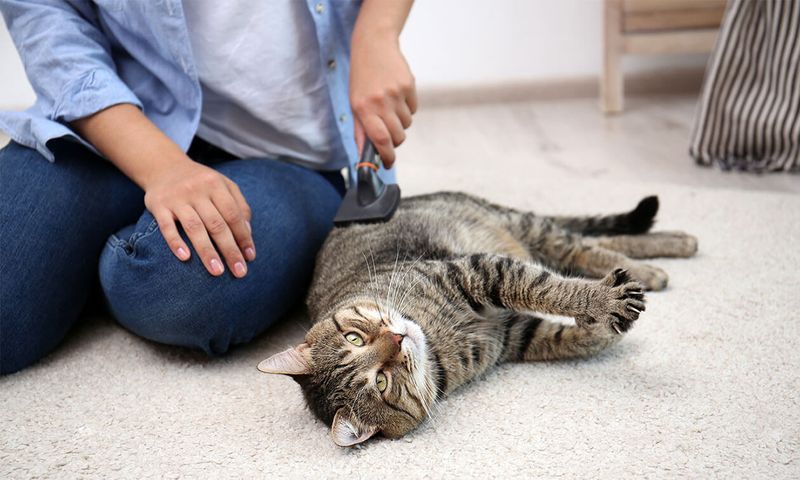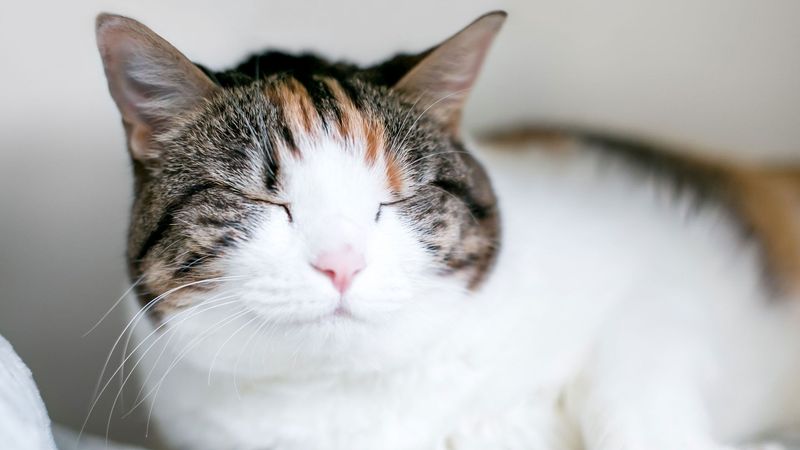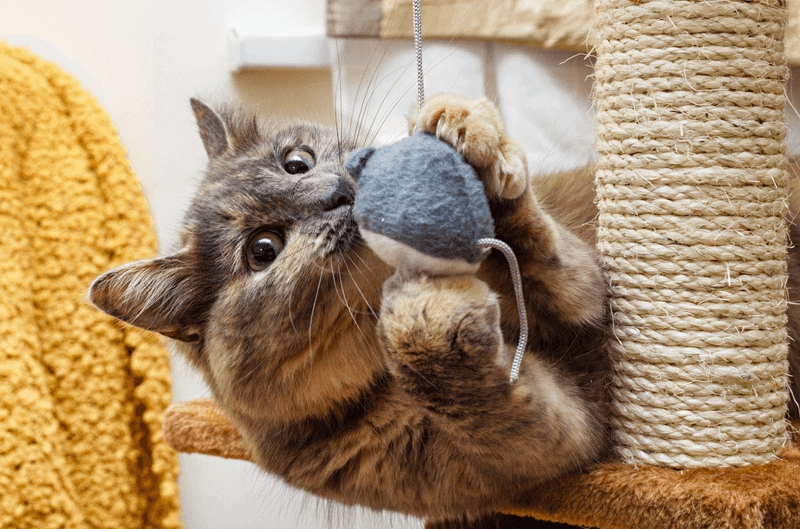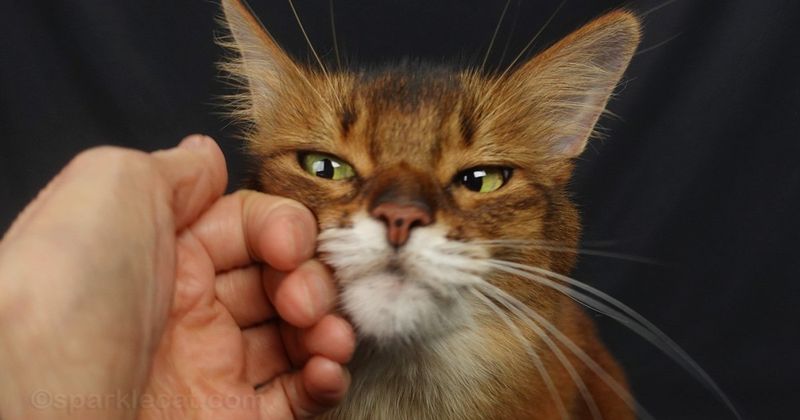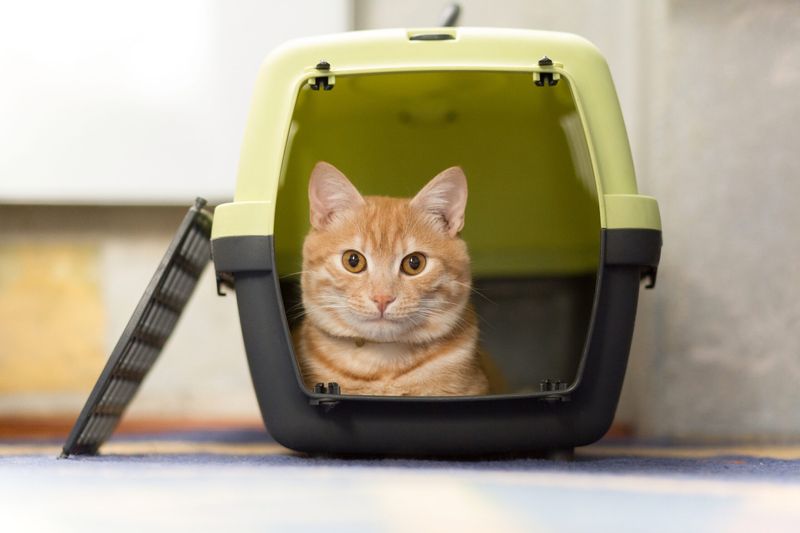📖 Table of Content:
- 1. Forcing Belly Rubs
- 2. Loud Music or Sudden Noises
- 3. Staring Contests
- 4. Surprising Them From Behind
- 5. Inconsistent Feeding Times
- 6. Ignoring Tail Language
- 7. Moving Their Litter Box
- 8. Forced Socialization
- 9. Skipping Playtime
- 10. Punishing Natural Behaviors
- 11. Using Strong Scents
- 12. Medicating Without Preparation
- 1. Daily Brushing Sessions
- 2. Slow Blink Conversations
- 3. Treat-Hiding Games
- 4. Cardboard Box Hideaways
- 5. Vertical Space Expansion
- 6. Respect for Independence
- 7. Clicker Training Sessions
- 8. Predictable Daily Routines
- 9. Gentle Introduction to Carriers
Cats have unique personalities and clear boundaries that can be difficult to understand. Their reactions—whether aloof or affectionate—often depend on the way people approach and interact with them. Recognizing these subtle cues is essential to building a strong, positive bond.
Many common mistakes made by cat owners can unintentionally cause stress or discomfort for their pets. Small changes in behavior and environment can make a big difference in a cat’s happiness. Awareness of these factors helps create a more harmonious living situation for both cats and their humans.
Learning what cats dislike and what they enjoy opens the door to deeper connection and trust. When owners adapt to their feline’s needs, relationships improve significantly. This understanding can turn everyday interactions into moments of mutual joy.
1. Forcing Belly Rubs
Cats show their bellies as a sign of trust, not an invitation to touch. Unlike dogs who love belly scratches, most cats feel vulnerable when you go for their soft underbelly. This seemingly friendly gesture triggers their defensive instincts. When you reach for their tummy, cats often respond with the classic ‘bear trap’ – grabbing your hand with their front paws while kicking with their back legs. Some might even bite to make their point clear. Instead of belly rubs, focus on petting areas cats naturally enjoy, like behind the ears or under the chin. Respect this boundary, and your cat will appreciate your understanding of their comfort zone.
2. Loud Music or Sudden Noises
The hearing range of cats surpasses that of humans by a significant margin, allowing them to detect even the faintest high-pitched sounds. What seems like moderate noise to a person could be intense and jarring for a cat’s sensitive ears. Loud, sudden sounds frequently provoke a defensive reaction.
Many cats develop anxiety from repeated exposure to loud environments. Signs include hiding, excessive grooming, or even aggression. Your cat isn’t being difficult – they’re genuinely distressed. Keep your living space relatively quiet, especially around feeding and sleeping areas. When you need to make noise, give your cat a warning or access to a quiet retreat. Their nervous system will thank you.
3. Staring Contests
Direct eye contact feels threatening in cat language. When you lock eyes with your feline, you’re unknowingly challenging them to a dominance showdown. In the wild, predators stare at prey before attacking, so your innocent gaze might trigger your cat’s survival instincts. Your cat may respond by staring back until someone backs down, or by leaving the situation entirely. This explains why cats often approach people who aren’t looking at them – these humans seem less threatening. Try the slow blink technique instead. Casually look at your cat, then slowly close and open your eyes. This communicates safety and affection in a language your cat understands perfectly.
4. Surprising Them From Behind
Feeling safe is crucial for cats, and their senses help them maintain that security. Unexpected approaches, particularly from behind, can cause a cat to react defensively. The cat’s reaction is based on instinct, not recognizing the intention behind the action. The sudden appearance makes them feel vulnerable and unsafe in their own territory. This explains why some cats jump dramatically or run away when surprised. Over time, these experiences can create lasting anxiety. Always approach your cat where they can see you coming. Make gentle noises before reaching their blind spots. This simple courtesy builds trust and prevents unnecessary stress responses that damage your relationship.
5. Inconsistent Feeding Times
Cats thrive on routine and predictability. Their internal clocks are precisely tuned, and they expect meals at specific times each day. When feeding schedules become erratic, cats experience genuine stress and anxiety about when their next meal will arrive. The uncertainty can trigger resource guarding, excessive meowing, or even aggressive behavior. Your cat isn’t being demanding – they’re responding to a basic survival concern about food security. Set consistent feeding times and stick to them whenever possible. If you need to be away, consider automatic feeders that maintain the schedule. Your cat will feel more secure knowing their basic needs have a reliable pattern, reducing stress-related behaviors throughout the day.
6. Ignoring Tail Language
Your cat’s tail serves as their emotional flag, communicating feelings with remarkable precision. A rapidly twitching or thrashing tail signals irritation or overstimulation, not happiness as many believe. Continuing to pet a cat with an agitated tail often results in scratches or bites. Most cats give multiple warnings before lashing out. The tail movement typically progresses from gentle swaying to more pronounced flicking as their patience wears thin. Many owners miss these crucial signals until it’s too late. Learn to recognize when your cat’s tail says “enough.” A happily relaxed cat holds their tail in a gentle curve or slight motion. Respecting these boundaries builds trust and prevents painful misunderstandings between you and your feline friend.
7. Moving Their Litter Box
A consistent litter box location is important to a cat’s feeling of comfort and control. When the box is moved without warning, it can disrupt their established routine and territorial boundaries. This disruption often results in anxiety or unwanted behaviors. When cats can’t find their litter box in its expected place, they often resort to inappropriate elimination elsewhere. This isn’t spite or bad behavior – it’s genuine distress about their disrupted environment. If you must move the litter box, do so gradually (a few inches per day) or temporarily place a second box in the new location while keeping the original. Once your cat consistently uses the new spot, you can remove the old one. This patient approach respects their need for environmental stability.
8. Forced Socialization
Building trust with unfamiliar faces doesn’t happen instantly for most cats. Forcing interactions before they’re ready can provoke genuine discomfort and distress. When you pick up your hiding cat to introduce them to guests, you’re overriding their natural safety mechanisms. Cats need escape routes and observation time to feel secure. When denied these options, they experience significant anxiety that can manifest as aggression or fear-based behaviors. Your well-meaning introductions might be creating negative associations. Let your cat decide when they’re ready to meet someone new. Provide high perches where they can safely observe interactions. Reward any voluntary socialization with treats or praise. This patient approach builds a cat who chooses to be social rather than fears social situations.
9. Skipping Playtime
Cats have powerful hunting instincts that need regular outlets. Without structured play sessions, these natural behaviors emerge in unwanted ways – like 3 AM zoomies or attacking your ankles. Your lazy lounger is actually a predator needing proper stimulation. Boredom in cats leads to destructive behaviors, obesity, and even depression. Many behavior problems stem directly from insufficient mental and physical engagement. Their wild ancestors spent hours daily hunting and exploring. Schedule at least two 10-minute play sessions daily using interactive toys that mimic prey movements. These sessions fulfill your cat’s predatory sequence of stalking, chasing, pouncing, and “killing.” Regular play reduces problem behaviors while strengthening your bond through shared positive experiences.
10. Punishing Natural Behaviors
Instinct motivates cats to scratch and climb as part of their everyday activities, not out of spite. When these behaviors are met with scolding, it can leave the cat bewildered. Rather than correcting the issue, punishment harms trust and fails to stop the behavior. Scratching maintains claw health and marks territory through scent glands in their paws. Climbing satisfies their need for vertical territory and safety. These aren’t bad behaviors – they’re just happening in inconvenient locations. Redirect rather than punish. Provide appropriate scratching surfaces with different textures. Install cat shelves or trees for climbing. Make forbidden areas less appealing with double-sided tape or aluminum foil. This approach respects your cat’s nature while protecting your possessions.
11. Using Strong Scents
The world of a cat is largely shaped by scents, as their sense of smell is far more acute than that of humans. Powerful odors from perfumes, essential oils, and household cleaners can be too intense for their delicate noses. What smells good to humans often becomes a source of discomfort for cats. Many cats actively avoid heavily scented areas or people wearing strong fragrances. Some essential oils like tea tree, citrus, and pine can even be toxic to cats when inhaled or absorbed through their skin. Choose unscented or naturally mild products for cleaning your home. Skip perfume before cuddle time. Avoid scented candles and diffusers, particularly in small spaces. These simple adjustments create a more comfortable sensory environment for your cat’s delicate nose.
12. Medicating Without Preparation
Surprise medication attempts create lasting negative associations with handling. Chasing your cat around the house before wrestling them into submission for a pill guarantees they’ll hide at the first sign of medicine in the future. The stress of forced medication impacts your cat’s overall health and damages the trust you’ve built. Many cats develop evasive behaviors that make future medical care increasingly difficult. This pattern becomes a self-reinforcing cycle. Practice handling your cat’s paws, ears, and mouth during positive interactions. Use pill pockets, compounded flavored medications, or professional techniques like the burrito wrap. Some medications can be reformulated into tasty treats or transdermal gels. Planning and patience transform medication from traumatic to tolerable.
1. Daily Brushing Sessions
Regular grooming removes loose fur that would otherwise end up on furniture or form hairballs in your cat’s digestive tract. Most cats enjoy short, gentle brushing with the right tools. Start with sessions lasting just 1-2 minutes and gradually increase as your cat becomes comfortable. Different coat types require different brushes. Short-haired cats typically need a soft bristle brush or rubber grooming mitt. Long-haired cats benefit from wide-toothed combs that reach the undercoat without pulling. Make brushing positive by offering treats before and after. Stop before your cat shows signs of irritation. Consistent, positive grooming experiences strengthen your bond while keeping your cat’s coat healthy and reducing shedding throughout your home.
2. Slow Blink Conversations
Cats communicate affection through a behavior ethologists call the “slow blink.” When your cat looks at you and slowly closes then opens their eyes, they’re expressing trust and contentment. Responding with your own slow blink creates a special moment of connection. This subtle communication builds bonds without invading your cat’s personal space. Many cats will approach after this exchange, seeking physical affection on their terms. The slow blink essentially says, “I feel safe enough around you to close my eyes.” Practice this technique when your cat is relaxed and making eye contact from a comfortable distance. Don’t stare intensely – keep your gaze soft and casual. This simple gesture acknowledges your cat’s language and strengthens your relationship through mutual understanding.
3. Treat-Hiding Games
The instinct to hunt is strong in cats, motivating them to seek out their food actively. By hiding treats in various spots, owners can stimulate this behavior and keep their cats mentally sharp. This method mirrors the way cats would forage and stalk prey in the wild. Start with easy hiding spots where your cat can see you place the treats. Gradually increase difficulty as they master the game. Some cats learn to recognize the sound of treat packages and come running for their hunting session. Food puzzles offer similar benefits in a contained format. These toys require cats to work out how to access treats through various mechanisms. The mental challenge satisfies their problem-solving nature and provides enrichment, especially for indoor cats who might otherwise lack stimulation.
4. Cardboard Box Hideaways
The fascination cats have with cardboard boxes goes beyond mere curiosity. Boxes serve as secure hideouts, provide insulation from the cold, and create elevated viewpoints for monitoring activity. This enclosed space allows cats to claim a personal domain within their environment.The enclosed space helps cats regulate body temperature and creates a feeling of safety. Many cats use boxes as stress-relief stations, retreating when they need to decompress or observe without being approached. Leave empty delivery boxes around for a few days before recycling them. Cut entrance holes in multiple sides for escape routes. Place boxes at different heights for variety. This zero-cost enrichment item offers psychological benefits far exceeding its humble appearance, making it one of the easiest ways to enhance your cat’s environment.
5. Vertical Space Expansion
Seeking elevated spots is an instinctive behavior in cats that provides them with safety and a better view of their surroundings. Offering vertical spaces turns the home into an engaging, multi-level environment that meets these natural desires. Even timid cats tend to gain confidence when given the chance to explore from higher vantage points. Cat trees, wall-mounted shelves, and window perches allow your cat to survey their domain from safe vantage points. These elevated spaces reduce stress in multi-pet households by providing escape routes and personal territory. Place climbing options near windows for entertainment value. Ensure each level is stable and easily accessible for your cat’s age and ability. The investment in vertical space pays dividends in reduced behavior problems and a more confident, content feline who feels secure in their environment.
6. Respect for Independence
Autonomy is highly prized by cats, often more so than by other pets. Giving them the freedom to choose when to engage fosters a relationship grounded in respect instead of obligation. This approach honors their independent nature while creating genuine connection. When your cat seeks attention, respond positively but briefly unless they clearly want extended interaction. Watch for subtle cues that they’ve had enough – tail twitching, ear movements, or shifting position often signal they’re ready for space. This balanced approach creates a cat who actively seeks your company rather than avoiding it. Many “aloof” cats simply need control over their social interactions. By respecting their boundaries, you become a safe person who understands their communication, strengthening your bond through trust.
7. Clicker Training Sessions
Cats respond remarkably well to positive reinforcement training. Using a clicker creates clear communication about which behaviors earn rewards. The distinct sound marks the exact moment your cat does something right, followed by a treat that reinforces the behavior. Start with simple targets like touching a stick with their nose or sitting on command. Many cats quickly progress to more complex behaviors like high fives, spinning in circles, or even using the toilet. Beyond the impressive tricks, training sessions build confidence and strengthen your communication system. The mental stimulation reduces problem behaviors while creating positive associations with you as the source of fun challenges and rewards. Even older cats can enjoy and benefit from these short, engaging learning opportunities.
8. Predictable Daily Routines
Predictability plays a vital role in a cat’s sense of security and well-being. Maintaining regular routines for meals, play sessions, and rest helps cats feel calm and assured. When daily life is consistent, cats tend to show reduced anxiety and fewer signs of stress. Morning routines are especially important for setting your cat’s day on the right track. Many cats wake early, ready for breakfast and interaction. Acknowledging this need, even briefly, prevents frustration behaviors like knocking items off shelves or meowing excessively. Try to maintain approximate times for key activities, even on weekends. If your schedule must change, adjust gradually when possible. This predictability creates a cat who trusts their environment and understands when their needs will be met, reducing anxiety-based behaviors.
9. Gentle Introduction to Carriers
Many cats associate carriers exclusively with stressful vet visits. This negative association creates a cycle where getting your cat into the carrier becomes increasingly difficult with each attempt. The struggle before even leaving home sets a negative tone for the entire experience. Transform the carrier into comfortable furniture by keeping it out permanently with the door open. Place soft bedding inside and occasionally hide treats or toys within. Some cats will begin using it as a safe sleeping spot when it becomes a normal part of their environment. Practice brief, positive carrier experiences that don’t end at the vet. Short car rides to nowhere special help separate the carrier from only negative outcomes. This preparation pays off during emergencies when quick evacuation might be necessary.

